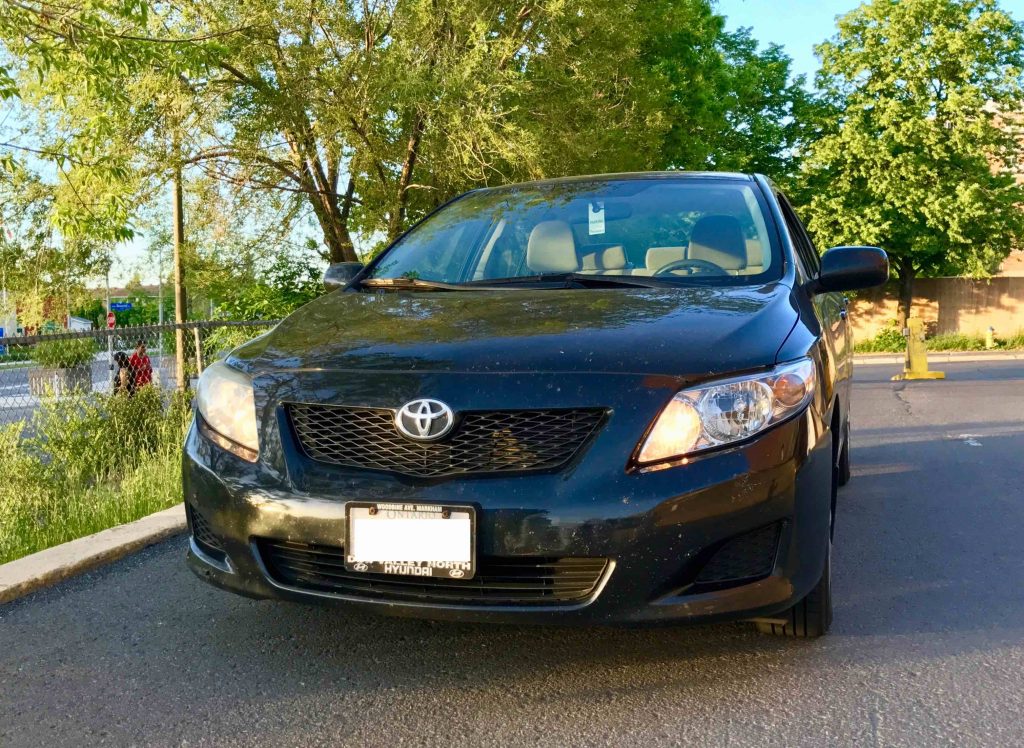Have a look at the parking lot of one of those suburban mega-restaurant-outdoor malls on a Friday night. You know, the ones with the Moxies, Milestones, Keg, Jack Astors and…well you get the idea. The asphalt is adorned with beautiful cars. Shiny, late model Bimmers, Acuras and Lexus SUVs. Who is driving all of them? How is it that they are all driving the perfect car? And how come they can afford them and we can’t?
The simple answer is that they aren’t affording them. The average car loan is now 69 months. That is insane. It has been steadily rising. People then leave car loans early to get a nicer car and carry their negative equity over to another new car loan. Interest on the interest. Logic out the window. The marketing machine and our peers have convinced us all what we need and to not worry about paying for it. It is, in fact, time to worry. So what is the perfect car and how do we find it?
The Acura vs Honda experiment
I recently moved from an Acura MDX to a Honda CRV. I was curious what would happen if I made the switch. It was fascinating. Nothing happened. Same friends. Same fun road trips. My kids still speak to me. Solid safe driving. It doesn’t accelerate as quickly, but that doesn’t really change the outcome of my grocery trips or business meetings. It likely saves about $4,000 a year vs the more luxurious MDX. My favourite new features? Runs on regular gas, cheaper insurance, half the fuel cost, lower servicing costs. And it has every kind of feature and drives great. I lost some prestige and the ability to carry an extra couple of people for when I need to do that twice a year. I’ll ship them in an Uber for an extra $50 a year. They’ll be fine. As a financial speaker and writer, I am likely better off with less prestige.
So what is the perfect car and how do you find it?
Start with the question of whether you need a car or not. Can you locate closer to your work? Carpool? Walk? Bike? Can you Uber around the rest of the time? Cars are a massive expense and doing without one and using the savings for debt repayment or increased investment is a powerful way to get ahead.
If you can’t avoid one, aim for the simplest, most reliable one you can find. The black Toyota Corolla in the picture is a great example. My son bought it as a 4 year old used car when he graduated. Lived frugally and paid the whole thing off in a few months. Runs like a dream. As a software engineer, could he have handled the payments on a Bimmer? Sure. But why? The CaRolls Royce (as he calls it) has manual winder windows, hub caps and a pretty spartan interior. Would father and son trips be more fun in a nicer car? I doubt it. What would have been the Bimmer payments are in his TFSA, compounding nicely. In one simple move, he gets a safe reliable ride and starts a path to financial freedom. And he is sure that his dates are interested in him, not his Corolla.
Where do you find the reliable ones? Easy. Subscribe to Consumer Reports Online. $25 a year. One of the great bargains. Look up the cars you are interested in and check the reliability score. Couldn’t be simpler. My CRV was their second best pick for small SUVs. I will admit that I liked the look of it better than their top pick.
How much can you afford for a car?
How much can you afford? I like the concepts on the interest.com site. Check out their post on how much car you can afford. They talk about a 20/4/10 rule, meaning to put down at least 20%, pay it off in less than 4 years and not pay more than 10% of your gross compensation for car payments and insurance. Good advice.
On affordability, don’t push your budget upward because your budget can handle the extra payment dollars. Think about your finances in terms of your net worth over time. In other words: What is the car decision that will optimize your wealth over the long term? Learn more about that here.
Once you get the car, take the time to do the scheduled maintenance. The newer cars tell you when they need help. Heed the call. It will save you in the long run.
So what is the perfect car?
The perfect car is one that gets you there safely and optimizes your wealth over the long term by being cheap to operate, reliable and have reasonable servicing costs. And even with Bluetooth connectivity, GPS mapping with traffic and route optimization, heated steering wheels, adjustable lumbar support and sculpted alloy rims, there is still one car feature that turns a good car a perfect car. The lack of a monthly payment.
What are your tips for finding and driving the perfect car? Let me know in the comments.




